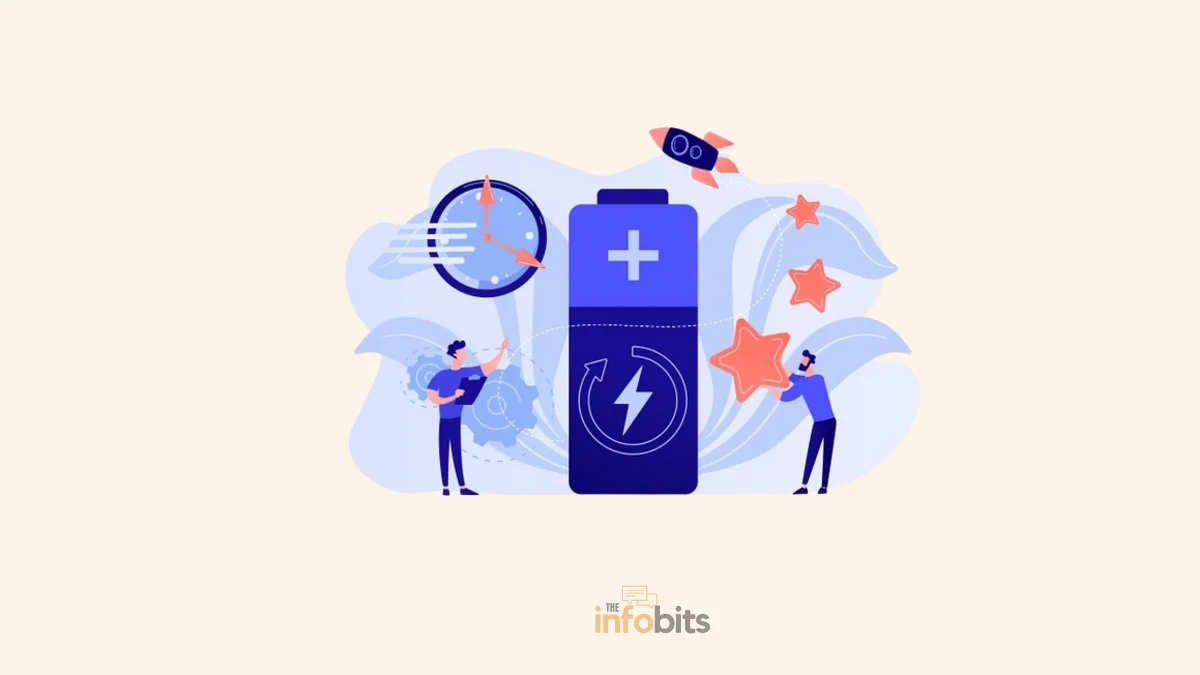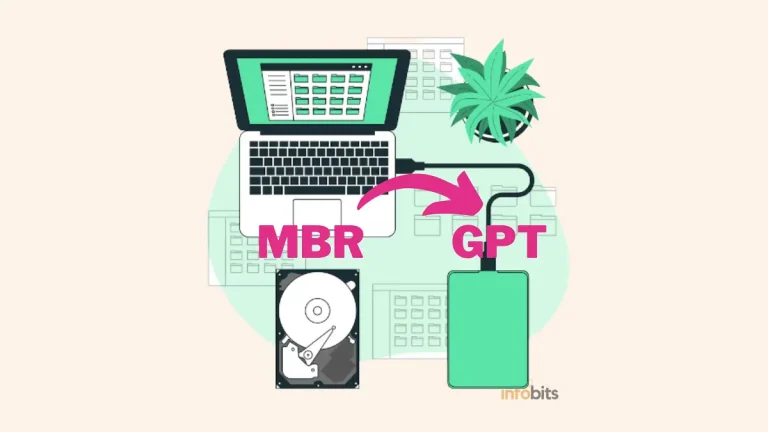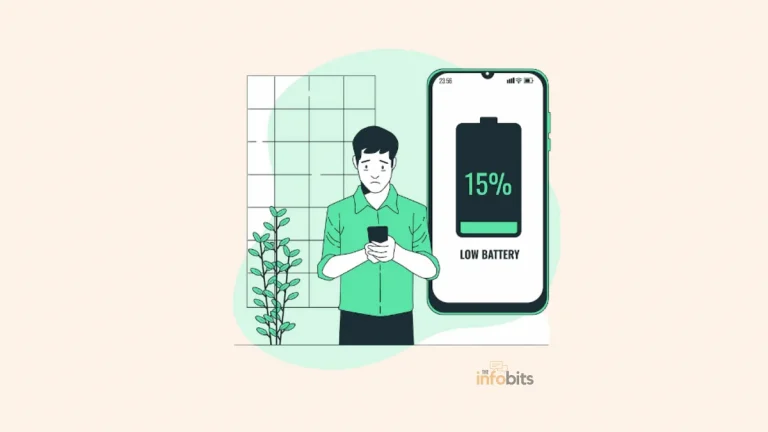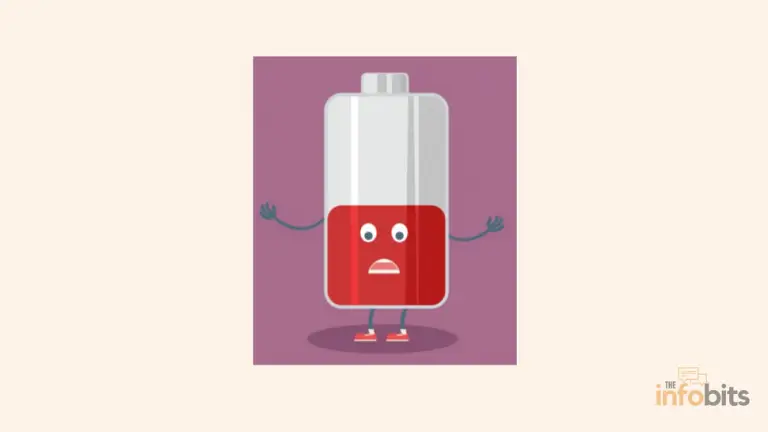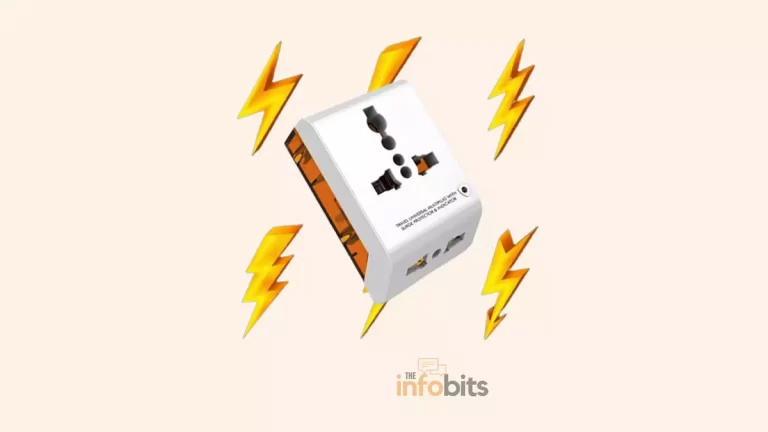Is Fast Charging Bad for Battery? Realities
Smartphones, electric vehicles, computers, and other devices come with fast chargers.
It’s useful because it allows you to charge your smartphone or car faster than you would otherwise have to wait.
However, because fast charging for phones is so common, we have some doubts:
- Does fast charging damage batteries?
- Is it possible that it will gradually reduce the phone’s capacity to store power?
- After all, will it cause unnecessary wear and tear on the phone’s battery?
- Is a fast charger bad for phones?
Of course, all these questions indicate that some consumers are still skeptical of quick charging.
If you go to any of the popular sites, such as Reddit or Quora, you’ll see several doubts about fast charging as mentioned earlier.
Even though fast charging is very convenient, we must consider whether it has any negative effects on battery life.
Let us examine it more closely.
What Is Fast Charging and How Does It Work?
Fast charging is a feature that allows you to charge your device in a fraction of the time it would normally take.
What Does “Fast Charging” Mean?
Fast charging has been a prominent marketing term for a wide range of electrical gadgets. This term, on the other hand, appears regularly in smartphone marketing materials.
Fast charging is now one of the most advanced technologies on the market. Not only is charging completed quickly, but it is also a more efficient process.
Many phone manufacturers have already shifted their phone charger technologies to this option, also known as quick charging based on Qualcomm technologies.
Samsung and Motorola’s Adaptive Fast Charging and Turbo Charging are among the most advanced, but Chinese companies such as Oppo and Huawei have their versions as well.
These materials can sometimes be misleading, causing you to assume your smartphone supports rapid charging only to discover later that it does not.
So, how much power does rapid charging require?
Smartphone manufacturers frequently refer to anything above 10 watts as a quick charging rate.
However, there is no industry standard for what defines a fast charging speed. The faster the charging rate, the higher the number.
If your phone or other device supports quick charging, the integrated charging circuit makes this possible.
Your device can only draw as much power as the charging circuit can handle. As a result, charging your smartphone with a fast-charging brick may not always result in a faster charge.
Of course, there could be other reasons for your smartphone’s slow charging, which you should consider as well.
Fast charging makes it easier to recharge your battery anytime you want. Given the increasing amount of time we spend on our devices and how difficult it is to get a single charge to last all day, fast charging is more vital than ever.
We’ll use smartphones as an example in this article.
Know About Mobile Phone Battery Technology
All mobile phones, as well as most personal devices and electric cars, use lithium-ion (Li-ion) rechargeable batteries.
Longer-lasting batteries are tough to develop because battery technology hasn’t improved in decades.
Instead, the most recent advancements in battery life have been from power-saving technology embedded into devices and enhanced software that manages to charge and discharge, allowing you to control battery power.
Unfortunately, the focus on expanding mobile phone battery life is mainly on automobiles, satellites, and your home’s power supply, all of which require industrial batteries to work for much longer than the two or three years we expect from our mobile devices.
The size of our phones’ batteries is another element that works against our expectations. The power supply of a phone pales in comparison to that of an electric car battery. The rechargeable battery of the Tesla 3 has about 4,000 times the capacity of the iPhone 13 Pro Max.
The computation becomes a bit more tricky since phone batteries are measured in milliampere-hours whereas electric vehicle batteries are measured in watt-hours. However, correlations may be derived.
This is crucial because the larger the battery, the more battery-saving methods are available to make it last longer.
When you charge a battery, the voltage rises, placing it under stress, especially in the last 20% of the charge.
Electric car makers may only charge new batteries to 80 percent capacity to avoid this stress.
Because of the increased battery capacity, the electric vehicle can still go a fair distance while avoiding higher voltages that cause stress. This can double the total life of the battery.
Larger phone batteries can give a full day’s work from a single charge, but only when completely charged.
While this helps the battery to last longer between charges, the greater voltage required to completely charge it puts the battery under more stress.
In the absence of a breakthrough in battery technology, battery gains will come from making our phones more energy-efficient in general.
Related: 9 Bad cell phone battery symptoms to be addressed immediately
Is Fast Charging Bad for Battery?
This question is typically prompted by the heat associated with striking your device with excessive amounts of electricity.
Furthermore, as you may be aware, heat is damaging to your battery, particularly lithium-ion batteries, which are utilized in the majority of today’s smartphones.
As a result, fast charge systems strive to reduce heat while increasing power to the greatest extent possible. A normal charger has a power output of 5 to 10 watts.
With a fast charger, this may be increased by up to eight times. The iPhone 13 Pro and Pro Max, for example, have a 20-watt fast charger, but the Galaxy Note 20 has a 25-watt charger.
Is fast charging bad for the battery? Or does fast charging affect battery life in any way?
No way.
You would believe that with all that extra power, your battery is in danger. According to various research, fast charging does not do any more damage to your phone than conventional charging. It will become hotter, but not to the point where it will cause noticeable harm.
This is connected to the rate at which charging takes place. Fast-charging batteries have two charging phases.
They absorb as much power as they can in the beginning. The first phase happens when the battery capacity is low or exhausted.
Using a fast charger will not hurt your phone’s battery in the long term unless your battery or charger circuitry has a technical flaw.
The first phase delivers a voltage spike to the battery, which is either empty or almost empty. This gives you a 50% to 70% charge in the first 10, 15, or 30 minutes.
Related: Does Your Phone Charge Faster on Low Power Mode?
This is because batteries may absorb a charge quickly during the first phase of charging without causing long-term harm to their health.
For example, Samsung boasts that its 45-watt charger can charge a phone from 0 to 70% in half an hour.
According to Apple, the fast charger that comes with the iPhone 13 Pro can charge it to 50% in 30 minutes.
This explains why manufacturers say in their smartphone marketing materials that their fast charger takes a particular amount of time to charge the battery from zero to a given capacity.
However, after the battery capacity is achieved, the charging speeds are reduced to minimize stress and heat, which may reduce the battery’s lifespan.
This explains why your phone charges rapidly up to a point but takes longer to fully charge.
Do you know how it feels like it takes twice as long to charge the final 20% or 30% of the battery as it does to charge the first 70% or 80%?
The last stage is the second charging phase, during which phone manufacturers must slow down and carefully monitor the charging rate to avoid damaging the battery.
The harm is unlikely if everything is well-managed on the inside.
A battery’s management system closely monitors the two charge phases and decreases the charging speed during the second phase to give the battery time to absorb the charge and avoid problems, which is why achieving those last few percentage points can take up to 10 minutes.
The Advantages of Fast Charging
The first advantage of this technology is that it improves the usability and mobility of gadgets designed to be moved around.
Today’s smartphones feature several background operations, which means that the power will undoubtedly be sucked up during the day.
When you can swiftly charge your gadgets, you may be on the go faster and more frequently without having to bunker down to charge.
The second is that larger capacity batteries can be utilized for mobile phones since charging them will be easier.
Longer charging durations are frequently associated with bigger batteries, which may be inconvenient if the battery is slowly charging.
A rapid charge allows bigger batteries to be used in mobile devices. By combining these big batteries with graphene technology for power banks, you can keep your phone charged throughout the day.
The last benefit is that rapid charging solutions include hardware and software failsafe systems and technologies.
These safeguard the integrity of the battery packs within your phone, assisting in the management of heat dissipation and power surges that can cause circuits to fry and explode.
Samsung offers a technology called adaptive charging, which uses rapid charging until a particular percentage of the battery is charged, ensuring that not too much power is pumped into the smartphone.
The Disadvantages of Fast Charging
The longevity of lithium-ion batteries is one restriction that persists in today’s technological environment.
While manufacturers are still working out graphene technology and obtaining patents, lithium-ion batteries remain the industry standard.
The problem with lithium-ion batteries is that they have a finite charge and discharge cycle. People are less inclined to care for their batteries as thoroughly with quick charging, which causes them to overcharge and deplete the batteries, reducing their lifespan.
The second major problem is that this phone charger technology might cause phones to overheat.
Because the voltage going into the battery is increased, more heat is produced, which can be harmful and potentially shorten the battery’s life.
However, charging your phone in a dry and cold atmosphere will guarantee that the battery does not overheat, so avoid charging your phone in a hot and humid environment.
Finally, hardware compatibility is still a crucial factor in fast phone charging.
The difficulty here is that there is no one protocol or standard that companies use, which means that various techniques will be used for different brands.
Most people are perplexed by this, but it is unlikely to be a major issue because most organizations have already switched their devices to support fast charging capabilities.
The Effect of Temperature on Battery Charging
It’s also worth mentioning that if the temperature of your phone exceeds a certain threshold, rapid charging may be shut off automatically.
The worst enemy of a battery is the heat. High temperatures are known to degrade a battery’s life over time.
Keep your phone out of direct sunlight, away from window sills, and off the dashboard of your car to minimize overheating. Over time, this will impair the battery’s efficiency.
In extreme cases, an overheated battery has the potential to explode. According to experts, temperatures as high as 86 degrees Fahrenheit (30 degrees Celsius) may diminish the performance of a battery.
Cold temperatures, on the other hand, can hurt battery health, so keep your phone away from extreme cold. Cold weather causes battery power to dissipate faster, affecting the user experience.
Related: Why do cell phones blow up and how can prevent it?
Is It Bad to Overcharge a Battery?
Phone owners used to be concerned about overcharging. The concern was that leaving a phone plugged in all the time might overcharge the battery, leading it to become unstable, reducing overall battery life, or causing the battery to explode or catch fire owing to extreme internal heat.
According to the experts we spoke with, a battery’s management mechanism is designed to switch off the charging circuit once the battery reaches 100 percent, preventing overcharging.
A contemporary phone cannot be overloaded unless something goes wrong with the battery circuitry. They have safeguards in place to prevent this from happening.
However, as previously said, you may put a battery to the test when it approaches 100 percent charge. This is why electronic-vehicle makers cut the charge on new batteries by around 80%.
You may also unplug your phone manually when it reaches an 80 percent charge, but you’ll miss out on the extra hours of use that a fully charged phone would provide.
How Do Phone Companies Deal With Fast Charging’s Negative Effects?
Smartphone makers have identified several techniques to reduce the impact of the fast charging phase on the battery using a dual-battery design.
The two batteries share a high input load during the fast-charging time, reducing damage.
Another safeguard is the use of various battery management software solutions. Smartphones include a charging management system that shields the battery from damage caused by a high input charge.
Apple’s battery charging optimization is an excellent example of this.
The performance of your phone’s battery management software determines whether or not quick charging affects your battery.
The general conclusion is that quick charging has little effect on battery life. However, owing to technological limitations, you shouldn’t expect the battery to last any longer than a regular “slow” charging brick.
However, it is only one component. Several factors influence a battery’s longevity.
Because most phone lithium-ion batteries have 400 to 500 charge cycles, each charge cycle is critical.
The majority of people believe that charging their phone once – even from 30% to 80% – is equivalent to one battery charge cycle.
This is incorrect since you will only be charging for half of a charge cycle, and if you repeat the process the next day, you will receive a complete charge cycle.
This perpetuates the myth that phones must be discharged almost completely before being charged back up to 100 percent to get the most out of their batteries.
Should We Fully Discharge the Battery Before the Next Recharge?
This was true in the case of nickel-cadmium batteries, but not in the case of lithium-ion batteries.
This is something you should avoid at all costs. Phones that charge quickly, in particular, produce chemical reactions that are damaging to the battery.
Because the battery absorbs more energy, charging the phone from there will cause it to heat up.
You might have wished to let your phone entirely drain occasionally to allow the battery to re-calibrate its charge level. However, with today’s phone batteries, this isn’t such a huge deal.
In actuality, depleting a battery may result in chemical reactions that shorten the battery’s lifespan over time.
The management system of a battery includes safety mechanisms that shut down a phone when it reaches an energy level that is safely above empty, preventing total depletion.
When you get the last low-battery warning, you presume you’ve reached zero. If you want to take a more active part in your battery’s health, plug in your phone when the battery level falls to around 30%, which is well above the stressfully low battery levels.
You can save battery life by lowering the brightness of your display, turning off Wi-Fi and Bluetooth when not in use, restricting background data usage through settings, and keeping a watch on apps that use GPS.
But, no matter how cautious we are, our phone batteries have a finite lifespan. The goal is to get as many months out of our battery as possible without worrying about its charge.
Things to Be Taken Care of in Fast Charging
There are a few things you can do to increase your smartphone’s battery life with fast charging, and they will help you solve your battery troubles.
Avoid using the phone constantly while charging it since the display absorbs the most power, raising the temperature when the battery is pressured.
Another thing you may do while charging your phone is to switch it to Airplane mode. As a consequence, your smartphone’s hardware resources will not be constantly used to search for networks, which would deplete the battery.
It will also prevent you from automatically checking any new non-urgent notifications.
Another bad practice to avoid is charging your phone while it is still in its case.
The more heat lost inside the battery, the higher the potential for long-term damage, not just to the battery, but also to other important devices. The heat will be diverted away from the phone by removing the cover.
Should You Be Concerned About Fast Charging’s Battery Effects?
There isn’t much there.
As previously indicated, the charging control system safeguards the battery. There is a chance that the battery life will be reduced, but not to the point where it should cause concern.
As a consequence, you shouldn’t be alarmed.
Your concerns about rapid charging are most likely no longer valid. So, why not consider how you could speed up your device’s charging process?
Frequently Asked Questions
Does charging a phone overnight damage the battery?
Leaving your phone plugged in when it is at full charge (whether with a fast charger or a conventional charger) can harm the battery over time. Limiting the length of time the battery is at full charge will assist if you consciously want to increase its life.
Is it better to slow charge or fast charge a battery?
Slow charging is recommended if you have ample time to charge your phone battery. This is not to say that fast charging will harm your battery. According to many studies, fast charging causes no more harm to your phone than regular charging. It may get hotter, but not to the point of causing apparent damage.
Do high-watt chargers damage batteries?
It should be noted here that you should always use the charger suggested or supplied by the manufacturer. Also, keep in mind that while using a higher-wattage charger will not harm your phone’s battery, it may take longer to charge your phone if your device is not intended for fast charging with high-watt chargers.
Is it OK to slow-charge a fast-charging phone?
Slow charging your fast-charging capable phone is not an issue. Just as you can safely drain a battery at a slower pace than its maximum rate, you can charge at a slower rate than its maximum rate.
Does a slow charger damage the battery?
No. A slow charging will cause no harm to the battery.
Does fast charging make your phone hot?
Yes. Because the smartphone is taking significantly more power from the charger, fast charging may cause your phone to heat up. However, in most cases, the temperature will be within limits and will not cause any problems with the phone.
Do fast chargers damage the battery?
Fast chargers do not cause significant damage to the battery from a normal perspective.
We hope you found this post useful, and please like and follow us on Facebook and Twitter for regular updates.
We also request that you bookmark this page for future reference. Sign up for our free newsletter as well to receive new information in your inbox regularly and stay technically up to date.

